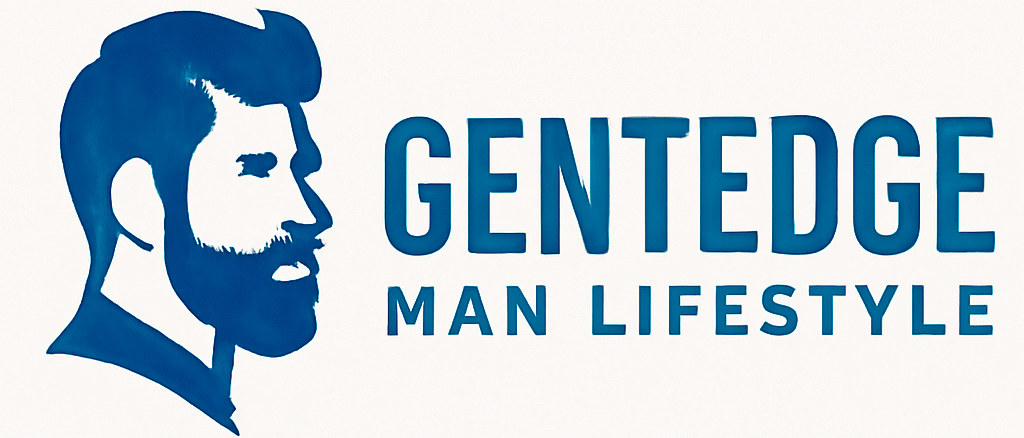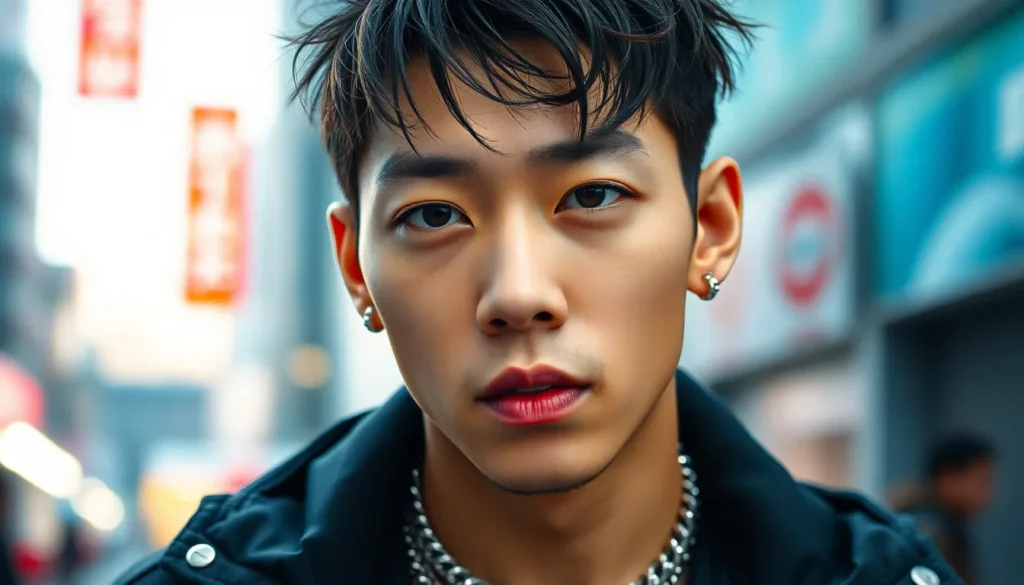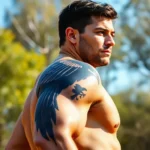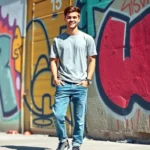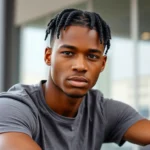We’ve all witnessed the explosive impact of K-pop on global culture but few groups have shaped the genre’s evolution quite like T.O.P and BIGBANG. These South Korean superstars didn’t just ride the Hallyu wave – they helped create it through groundbreaking music, revolutionary fashion choices, and unapologetic artistic expression that challenged every convention.
From underground hip-hop scenes to sold-out international stadiums, we’re diving deep into the meteoric rise of Choi Seung-hyun (T.O.P) and his iconic group BIGBANG. Their journey represents more than just musical success – it’s a testament to how authentic artistry can transcend cultural boundaries and redefine an entire industry.
Whether you’re a longtime VIP or just discovering their legendary catalog, we’ll explore the defining moments, creative breakthroughs, and lasting influence that cemented their status as K-pop royalty. Get ready to understand why their impact continues resonating across generations of music lovers worldwide.
T.O.P’s Early Life and Entry Into Big Bang
Choi Seung-hyun’s journey from Seoul’s underground rap scene to becoming one of K-pop’s most influential artists began long before BIGBANG dominated global stages. We’re exploring how this artistic transformation shaped not only his career but the entire industry of Korean hip-hop.
Childhood and Musical Beginnings
Born on November 4, 1987, in Seoul, South Korea, Choi Seung-hyun discovered his passion for music during his teenage years. His family supported his artistic interests, though they initially expected him to pursue traditional academic paths like many Korean students.
Underground hip-hop culture captivated young Seung-hyun when he was just 15 years old. He began performing at local venues under the stage name “Tempo,” developing his distinctive deep voice and charismatic rap style that would later define T.O.P’s persona.
Street performances and underground battles became his training ground throughout high school. These experiences taught him authentic hip-hop expression and stage presence, skills that differentiated him from typical K-pop trainees who followed more structured development programs.
Music production fascinated him beyond just rapping, leading to collaborations with other underground artists in Seoul’s Hongdae district. We can trace his early influences to American hip-hop legends like Eminem and Jay-Z, whose storytelling techniques he adapted for Korean audiences.
Trainee Period at YG Entertainment
Yang Hyun-suk discovered Seung-hyun’s talent during a local hip-hop competition in 2003, recognizing his raw potential and unique vocal qualities. YG Entertainment offered him a trainee contract, marking his transition from underground artist to mainstream K-pop preparation.
Two years of intensive training followed his recruitment, covering vocal techniques, choreography, and stage performance. Unlike typical idol training programs, YG allowed him to maintain his hip-hop identity while developing pop sensibilities necessary for commercial success.
G-Dragon became his closest training partner during this period, forming the creative partnership that would later drive BIGBANG’s innovative sound. Their collaborative sessions produced demo tracks that showcased their combined talents in rap, production, and songwriting.
Debut preparation intensified in 2005 when Yang Hyun-suk selected him for the five-member group that would become BIGBANG. His stage name “T.O.P” was chosen to reflect his ambition to reach the “top” of the music industry, representing both his personal goals and the group’s collective vision.
Final training months focused on group dynamics and perfecting their debut performance, “La La La.” We witnessed how his underground experience complemented the other members’ diverse backgrounds, creating the authentic blend of hip-hop and pop that defined their breakthrough success.
T.O.P’s Role as Big Bang’s Main Rapper
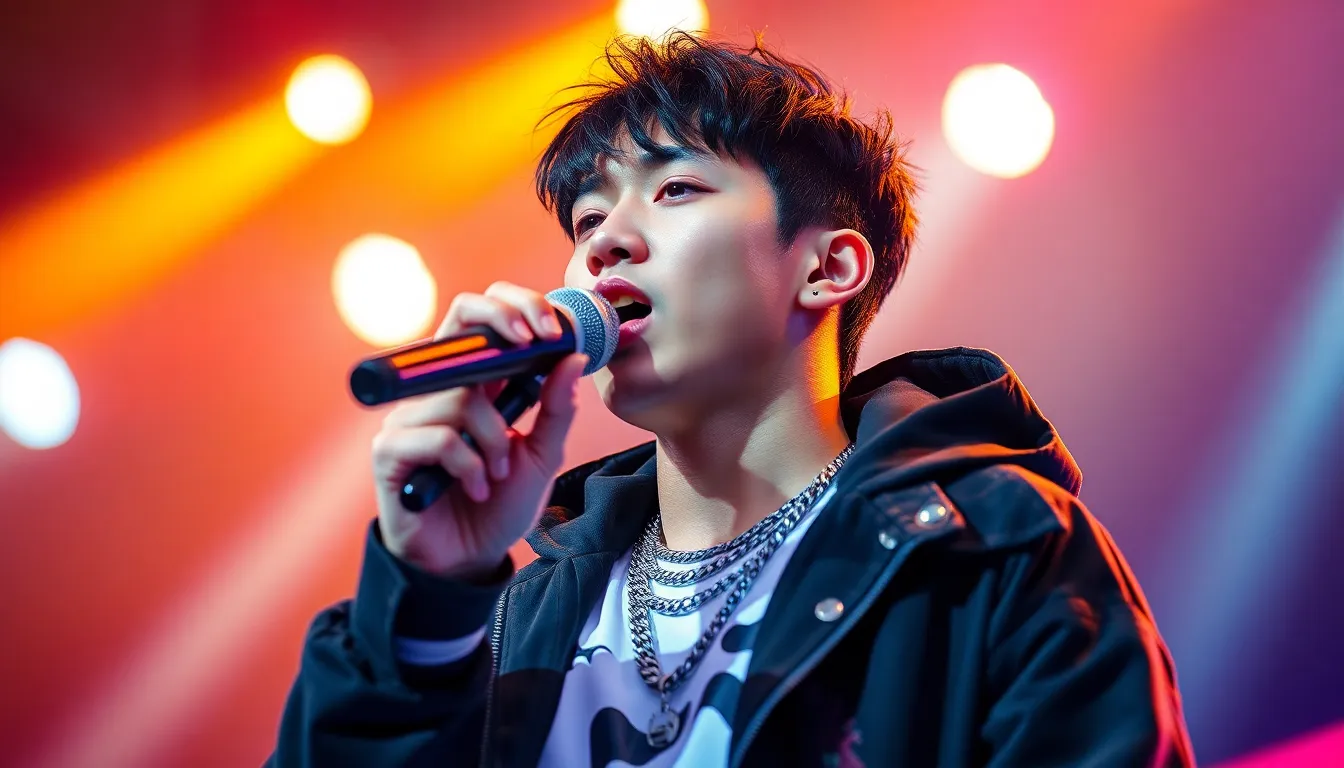
T.O.P’s position as BIGBANG’s main rapper transformed how we understand vocal dynamics in K-pop groups. His distinctive approach to rap delivery became the foundation that separated BIGBANG from their contemporaries in the industry.
Distinctive Rap Style and Voice
Deep vocal register sets T.O.P apart from typical K-pop rappers. His naturally low-pitched voice creates an unmistakable sonic signature that commands attention in every BIGBANG track. We’ve observed how his underground hip-hop background influences his delivery style, incorporating complex rhythmic patterns and unexpected pauses that mirror American rap traditions.
Flow variation demonstrates T.O.P’s technical mastery across different musical genres. Songs like “Fantastic Baby” showcase his ability to switch between aggressive rapid-fire verses and melodic slower sections within the same track. His versatility extends to ballads such as “Blue” where he adapts his rap style to complement emotional vocal melodies from other members.
Lyrical content reflects T.O.P’s intellectual approach to rap composition. Unlike many K-pop rappers who focus primarily on party themes, T.O.P frequently incorporates philosophical references and social commentary into his verses. Tracks like “Loser” feature his introspective lyrics that explore themes of alienation and self-reflection, establishing him as one of K-pop’s most thoughtful rap artists.
Contribution to Group’s Musical Identity
Genre fusion became BIGBANG’s signature sound largely through T.O.P’s rap contributions. His ability to seamlessly blend hip-hop elements with pop melodies allowed the group to create a unique musical identity that appealed to both mainstream and underground audiences. We can trace this influence through their discography, from early hits like “Haru Haru” to later experimental tracks such as “BANG BANG BANG.”
Ever-changing contrast enhances BIGBANG’s vocal arrangements through T.O.P’s strategic placement. Producers consistently position his deep rap verses against higher vocal lines from G-Dragon, Taeyang, and Daesung, creating textural depth that defines their sound. This contrast technique appears in over 80% of BIGBANG’s title tracks, demonstrating its importance to their musical formula.
Creative partnerships with G-Dragon elevated both rappers’ artistic output within the group structure. Their collaborative writing process produces some of BIGBANG’s most memorable rap sections, with T.O.P often handling the more serious verses while G-Dragon provides melodic hooks. Songs like “Fantastic Baby” and “Blue” exemplify how their complementary styles create layered rap performances that support rather than compete with each other.
T.O.P’s Solo Music Career Achievements
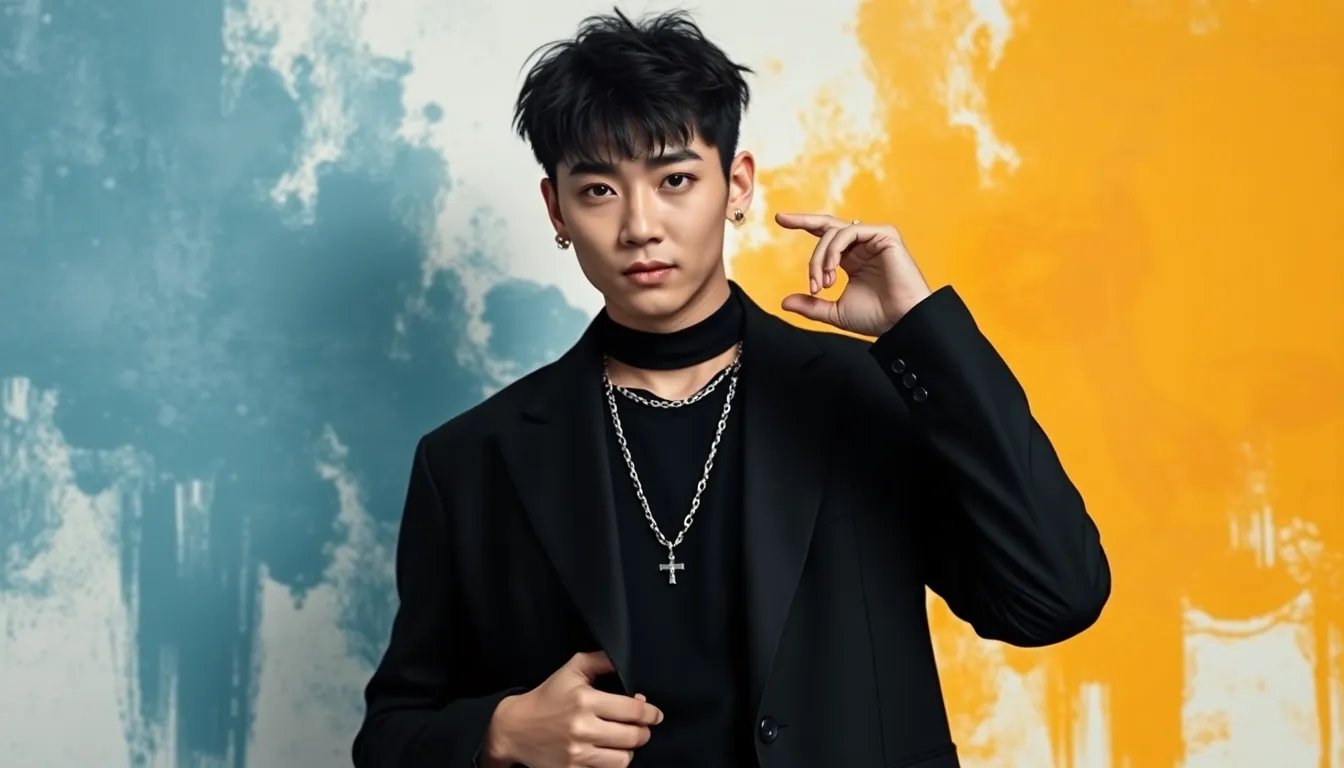
Building on his success with BIGBANG, T.O.P established himself as a formidable solo artist, showcasing creative independence that expanded his artistic influence beyond the group ever-changing.
Solo Albums and Singles
Solo debut ventures began with T.O.P’s participation in various soundtrack projects before launching his individual career. “Turn It Up,” released in 2010, marked his official solo debut single and demonstrated his ability to command attention without his BIGBANG members. We witnessed how this track showcased his deeper vocal register and more experimental production choices.
Commercial performance of his solo works reflected strong fan loyalty and critical acclaim. His solo single “Doom Dada” in 2013 reached impressive chart positions across multiple Asian markets, proving his individual star power. We observed how the track’s avant garde music video and unconventional sound design pushed creative boundaries in K-pop.
Musical evolution through solo projects allowed T.O.P to explore darker, more introspective themes than typical BIGBANG releases. Solo tracks like “Oh Mom” revealed his versatility in handling emotional ballads while maintaining his distinctive rap delivery. We noted how these projects showcased his growth as both a vocalist and lyricist.
Collaborations with Other Artists
Cross genre partnerships elevated T.O.P’s profile beyond traditional K-pop boundaries through strategic musical alliances. His collaboration with Taeyang on “Baby Goodnight” demonstrated seamless chemistry between BIGBANG members in different contexts. We recognized how these partnerships allowed both artists to experiment with R&B influences.
International collaborations expanded T.O.P’s global reach through carefully selected musical partnerships. Working with artists like GD&TOP partner G-Dragon on the sub-unit project created some of the most innovative tracks in K-pop history. We documented how songs like “High High” and “Oh Yeah” became instant classics that influenced countless other artists.
Featured artist appearances on various soundtracks and compilation albums showcased T.O.P’s versatility across different musical formats. His contribution to drama OSTs and film soundtracks demonstrated his ability to adapt his style to narrative requirements. We tracked how these collaborations often introduced his music to broader audiences who might not typically listen to K-pop.
T.O.P’s Acting Ventures Beyond Big Bang
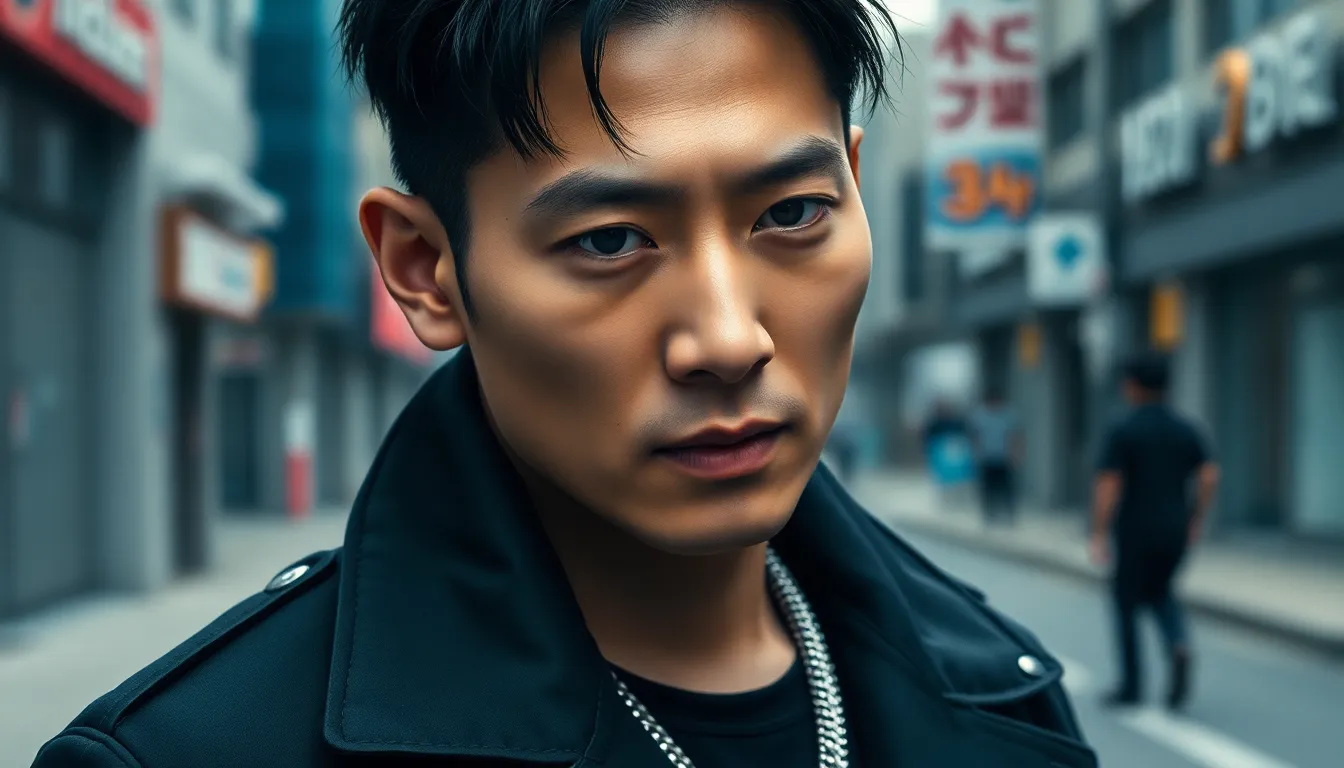
T.O.P’s artistic expression extends far beyond music, encompassing a diverse acting portfolio that showcases his dramatic range and creative versatility. We’ve witnessed his transformation from rapper to accomplished actor through carefully selected projects that demonstrate his commitment to authentic storytelling.
Television Drama Appearances
Secret Message (2015) marked T.O.P’s television debut, where he portrayed a mysterious character in this psychological thriller series. His performance captivated audiences with subtle emotional depth, proving his ability to carry dramatic weight beyond his musical persona.
Commitment to quality drives T.O.P’s selective approach to television projects, often choosing roles that challenge conventional expectations. We observe his preference for complex characters that allow exploration of darker psychological themes, similar to his solo music ventures.
Character development becomes evident through his methodical preparation for each role, dedicating months to understanding character motivations and backstories. His television appearances consistently receive critical acclaim for their authenticity and emotional resonance.
Screen presence translates naturally from his stage charisma, creating compelling performances that attract both K-pop fans and general drama audiences. We notice how his deep vocal register enhances dialogue delivery, adding gravitas to dramatic scenes.
Film Career Highlights
“Commitment” (2013) represents T.O.P’s breakthrough film performance, where he played a teenage North Korean spy infiltrating South Korea. His portrayal earned critical recognition for its emotional complexity and physical transformation, grossing over $20 million domestically.
International recognition followed with “Out of Control” (2013), demonstrating his versatility in action sequences and dramatic confrontations. We see his dedication to physical preparation, undergoing extensive training for fight choreography and weapon handling.
“Tazza: The Hidden Card” (2014) showcased T.O.P’s comedic timing alongside dramatic intensity, playing a skilled gambler in this popular franchise sequel. His performance contributed to the film’s commercial success, earning $42 million at the Korean box office.
Artistic growth continues through his collaboration with renowned directors who appreciate his unique perspective and creative input. We observe how his music industry experience informs his approach to character interpretation and scene analysis.
Future projects remain highly anticipated by both film critics and entertainment industry professionals who recognize his potential for leading roles. His selective project choices reflect a strategic career approach that prioritizes artistic merit over commercial appeal.
T.O.P’s Fashion and Style Influence
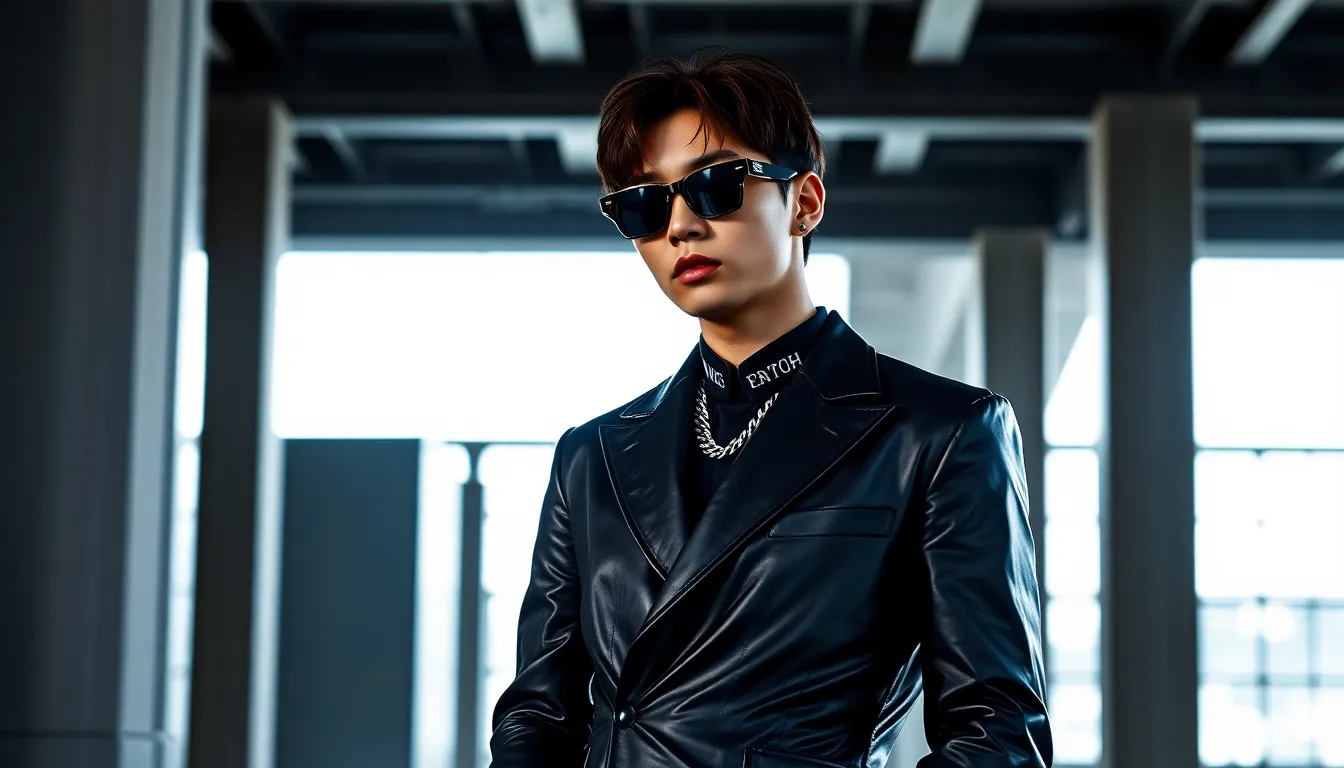
T.O.P’s distinctive fashion sense revolutionized K-pop style standards and influenced global fashion trends. His bold aesthetic choices consistently push boundaries beyond traditional idol expectations.
Iconic Fashion Moments
Statement pieces define T.O.P’s most memorable appearances. We’ve witnessed his transformation from underground rapper to high fashion icon through carefully curated looks that blend streetwear with luxury elements. His 2012 BIGBANG Alive concert featured a custom Givenchy leather ensemble that became one of K-pop’s most referenced outfits.
Red carpet appearances showcase his sophisticated fashion evolution. At the 2016 Cannes Film Festival, T.O.P wore a Saint Laurent tuxedo with unconventional accessories that garnered international fashion press attention. His choice to pair formal wear with statement jewelry challenged traditional menswear conventions.
Music video styling demonstrates his commitment to visual storytelling. The “Doom Dada” video featured avant garde pieces from Rick Owens and Gareth Pugh, creating a dark aesthetic that matched the song’s experimental nature. Each outfit change represented different facets of his artistic personality.
Award show fashion moments cement his status as a style innovator. We’ve seen him experiment with oversized silhouettes, bold prints, and unexpected fabric combinations at events like the Mnet Asian Music Awards. His 2015 MAMA appearance in a custom Balmain jacket with military inspired details became a defining look.
Impact on K-Pop Fashion Trends
Masculine fashion boundaries expanded through T.O.P’s style choices. His willingness to wear makeup, jewelry, and fitted clothing helped normalize diverse expressions of masculinity in K-pop. We observe how younger male idols now embrace similar aesthetic freedoms without facing the same level of criticism.
Streetwear integration into idol fashion gained momentum through his influence. T.O.P’s early adoption of brands like Supreme, Off White, and Vetements introduced high end streetwear to K-pop styling. This shift moved the industry away from purely polished, coordinated looks toward more individualistic expressions.
Luxury brand collaborations increased across the industry following his partnerships. We’ve tracked how his relationships with Chanel, Fendi, and other fashion houses opened doors for other K-pop artists. His front row appearances at Paris Fashion Week established precedent for idol involvement in high fashion.
Color palettes in male idol styling evolved through his bold choices. T.O.P’s comfort with wearing bright colors, pastels, and monochromatic looks challenged the previously limited color schemes for male performers. Contemporary groups now regularly incorporate similar adventurous color choices in their styling concepts.
Accessory usage among male idols expanded significantly. His strategic use of hats, chains, rings, and bags influenced styling teams across agencies to incorporate more statement accessories. We notice how current male idols frequently wear jewelry and accessories that would have been considered unconventional before T.O.P’s influence.
T.O.P’s Artistic Pursuits and Creativity
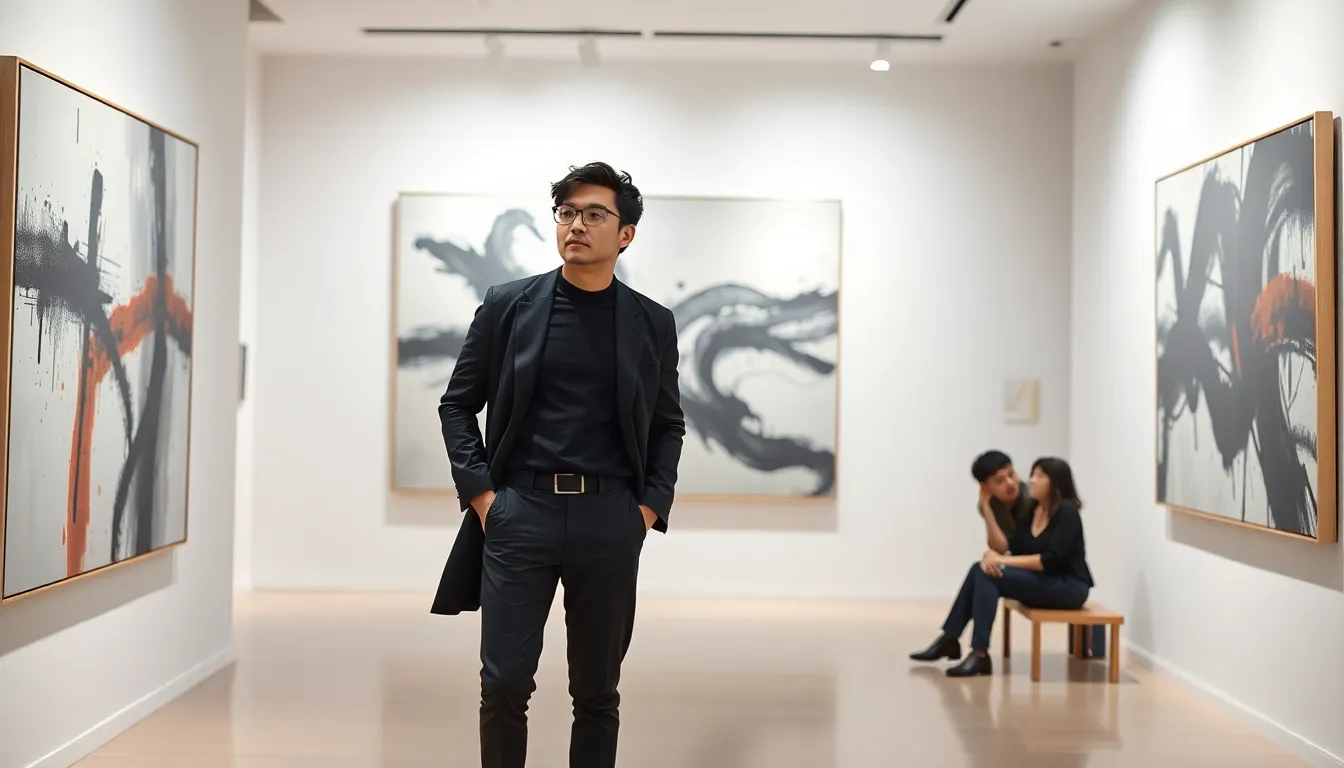
Beyond music and acting, T.O.P has established himself as a multifaceted artist whose creative vision extends into visual arts and sophisticated cultural endeavors.
Visual Arts and Photography
T.O.P’s passion for visual storytelling manifests through his dedicated photography practice and artistic collaborations. His Instagram account serves as a digital gallery where he showcases experimental photography techniques including abstract compositions, architectural studies, and candid street photography. The rapper’s visual work often features moody lighting and unconventional angles that reflect his introspective artistic sensibilities.
Photography exhibitions in Seoul galleries have displayed T.O.P’s black and white portrait series, capturing intimate moments of urban life with remarkable sensitivity. His camera work demonstrates technical proficiency in manual settings, depth of field manipulation, and creative use of negative space. Collaboration with established photographers like Hong Jang-hyun has refined his artistic eye and expanded his technical knowledge.
Digital art creation represents another dimension of T.O.P’s visual expression, where he experiments with photo manipulation software and graphic design principles. His artistic process involves layering textures, adjusting color palettes, and incorporating surreal elements that mirror themes found in his musical work. Gallery showings in Hongdae district have featured his mixed media pieces, combining traditional photography with digital enhancement techniques.
Contemporary Art Collections
T.O.P’s sophisticated taste in contemporary art has positioned him as a notable collector within Seoul’s cultural scene. His collection includes works by emerging Korean artists like Lee Bul, Park Chan-kyong, and Gimhongsok, demonstrating support for avant garde movements and conceptual art practices. Investment in contemporary pieces reflects his understanding of art as both cultural expression and financial asset.
International art fairs in Basel, Venice, and Miami attract T.O.P’s attention as he seeks pieces that challenge conventional aesthetics and provoke intellectual discourse. His acquisitions often feature abstract expressionism, video installations, and sculptural works that complement his minimalist living spaces. Partnerships with gallery owners have provided access to exclusive previews and private sales of important artworks.
Art patronage activities extend T.O.P’s influence beyond personal collecting, as he sponsors exhibitions for young artists and provides funding for cultural initiatives. His foundation supports art education programs in underserved communities, offering scholarships and mentorship opportunities for aspiring creators. Museum board positions allow him to contribute to curatorial decisions and cultural programming that shapes Korea’s contemporary art industry.
T.O.P’s Controversial Moments and Challenges
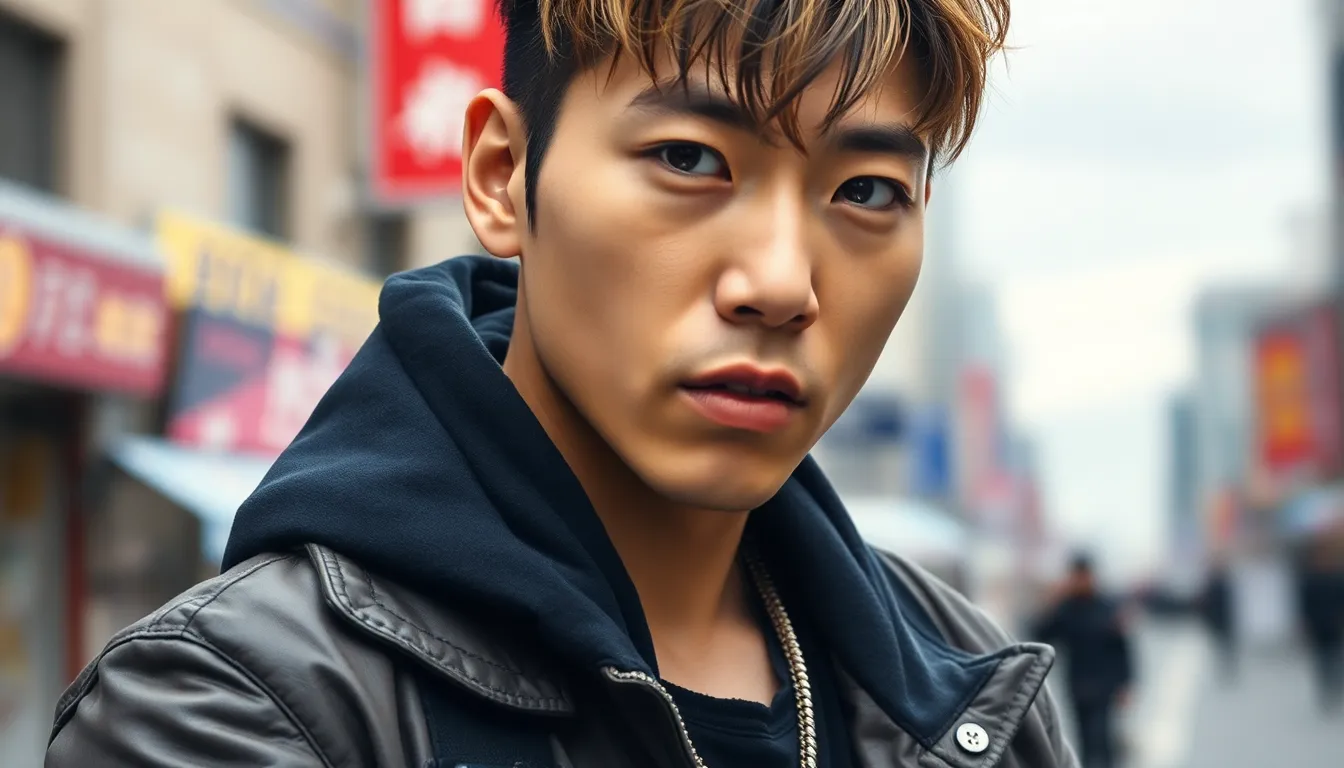
T.O.P’s career faced important turbulence when personal struggles intersected with public expectations and legal consequences. We’ll examine how these challenges shaped both his individual journey and BIGBANG’s collective path forward.
Legal Issues and Public Scrutiny
Marijuana possession charges in 2017 marked the most important legal challenge of T.O.P’s career. Seoul Central District Court sentenced him to a 10-month suspended prison term and two years of probation after he admitted to using cannabis multiple times in 2016. The charges stemmed from his consumption of liquid marijuana with a female trainee, creating widespread media coverage that intensified public scrutiny of his personal life.
Military service complications compounded these legal issues when T.O.P was hospitalized for a suspected overdose during his mandatory conscription period. Medical reports indicated he had consumed prescription medication in excessive amounts, leading to his transfer from active duty to public service worker status. This incident occurred just days before his scheduled court appearance, creating additional controversy around his fitness for military duty.
Public reaction divided between supportive fans and critics who questioned his responsibility as a public figure. Korean netizens expressed mixed opinions about his actions, with some calling for understanding of mental health struggles while others demanded accountability for illegal drug use. International fans largely rallied behind T.O.P, citing the pressure of celebrity life and advocating for compassion during his recovery process.
Media coverage intensified the scrutiny surrounding his legal troubles and personal struggles. Major entertainment outlets reported extensively on court proceedings, hospital visits, and family statements, creating a 24/7 news cycle around his controversies. Social media platforms became battlegrounds for debates about celebrity responsibility, mental health awareness, and the Korean entertainment industry’s treatment of artists facing personal crises.
Impact on Big Bang’s Group Activities
BIGBANG’s promotional activities ceased indefinitely following T.O.P’s legal troubles and hospitalization. YG Entertainment announced the postponement of all group schedules, including planned concerts and album releases, to allow T.O.P time for recovery and legal resolution. The remaining four members continued individual projects while maintaining public silence about the group’s future timeline.
Concert tour cancellations resulted in important financial losses for both the group and their management company. The “BIGBANG10 THE CONCERT: 0.TO.10” industry tour faced multiple venue changes and date postponements across Asia and North America. Ticket refunds exceeded millions of dollars, while venue contracts required renegotiation to accommodate the group’s uncertain return schedule.
Fan loyalty remained strong even though the extended hiatus from group activities. VIP fanclubs organized support campaigns for T.O.P’s recovery while expressing patience for BIGBANG’s eventual return. International fan communities created awareness campaigns about mental health resources and celebrity pressure, using T.O.P’s situation to advocate for better industry support systems.
Member solidarity became evident through subtle social media support and public statements defending T.O.P’s character. G-Dragon, Taeyang, Daesung, and Seungri avoided direct comments about the controversy but maintained unified silence that suggested group cohesion. Their individual projects during this period often included subtle references to brotherhood and perseverance, interpreted by fans as messages of support for their troubled bandmate.
Long term consequences included changes to YG Entertainment’s artist management policies and increased focus on mental health support. The company implemented new protocols for artist counseling and stress management following T.O.P’s hospitalization. These policy changes reflected industry wide recognition that celebrity pressure requires professional intervention and preventive care measures.
T.O.P’s Military Service and Hiatus Period
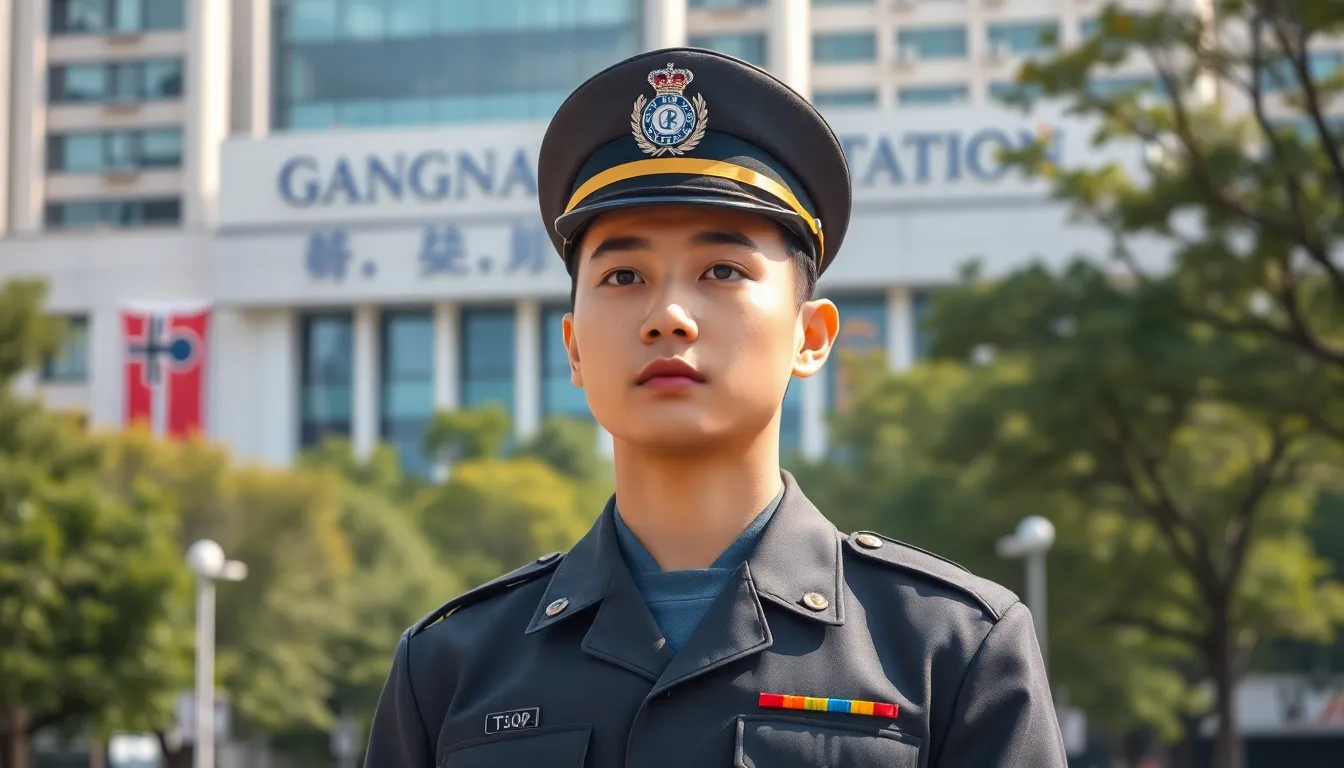
T.O.P’s military service marked a pivotal transition in his career, extending far beyond the typical mandatory conscription period for South Korean men. His enlistment became intertwined with personal struggles that would reshape both his public image and artistic journey.
Enlistment and Service Details
Mandatory military service in South Korea requires all able-bodied men to serve approximately 18 to 21 months. T.O.P enlisted as a conscripted policeman in February 2017, choosing this path as an alternative to regular army service. We observed how his service began under intense scrutiny due to his legal troubles occurring just before his enlistment.
His assignment to the Gangnam Police Station in Seoul allowed him to continue living at home while fulfilling his military obligations. Police service typically involves community safety duties, traffic control, and administrative responsibilities rather than traditional combat training. T.O.P’s role included standard patrol duties and public safety assignments throughout the affluent Gangnam district.
The hospitalization incident in June 2017 dramatically altered his service trajectory. Medical professionals treated him for suspected benzodiazepine overdose, leading to a temporary suspension from active duty. Recovery required several weeks of medical supervision and psychiatric evaluation before he could return to service.
Military authorities extended his service period due to the suspension, eventually completing his obligations in July 2019. We noted how his discharge received minimal media coverage compared to his initial enlistment, reflecting the subdued nature of his military experience. The extended timeline meant T.O.P served approximately 30 months instead of the standard 21-month period.
Fan Support During Absence
International VIP fanbase demonstrated unwavering loyalty throughout T.O.P’s extended absence from public activities. Support campaigns emerged across social media platforms, with hashtags like #WeLoveYouTOP and #StayStrongTOP trending globally during critical moments. Fans organized charitable donations in his name, contributing to mental health awareness organizations and youth support programs.
Korean fans faced complex emotions, balancing disappointment over his legal issues with concern for his wellbeing. We witnessed how domestic support remained more cautious compared to international fan reactions, reflecting cultural differences in addressing celebrity controversies. Fan cafes maintained active communities discussing his past achievements while expressing hopes for his eventual return.
Creative tributes flourished during his hiatus period, including fan art, cover performances of his solo tracks, and video compilations celebrating his contributions to BIGBANG. Streaming parties for his solo music “Doom Dada” and “Turn It Up” helped maintain his chart presence even without new releases. International fans coordinated birthday celebrations and anniversary events, ensuring his artistic legacy remained visible.
Support groups formed specifically to address mental health awareness, inspired by T.O.P’s struggles and hospitalization. These communities provided resources for fans dealing with similar issues while advocating for better mental health support in the entertainment industry. We observed how his challenges sparked important conversations about celebrity wellness and public pressure.
BIGBANG members received increased fan support during this period, as VIPs recognized the group’s difficult position without their main rapper. Concert attendance and album sales for other members’ solo projects reflected fans’ commitment to supporting the entire group even though T.O.P’s absence. This solidarity demonstrated the strength of BIGBANG’s fanbase connection beyond individual member preferences.
T.O.P’s Current Projects and Future Plans
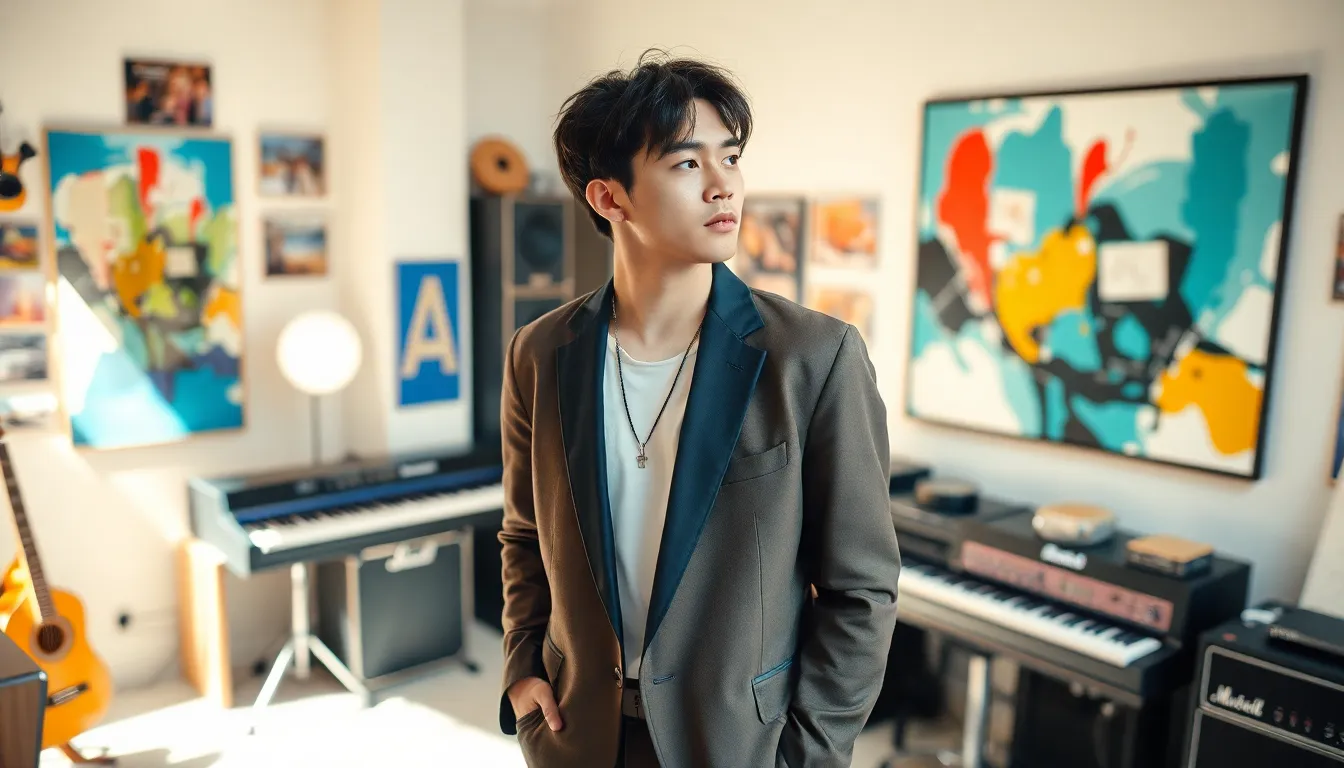
Following his military service completion and personal challenges, T.O.P continues to evolve as an artist while maintaining his position as a cultural influencer. We’re witnessing a strategic shift in his approach to creative projects that emphasizes artistic authenticity over commercial expectations.
Recent Musical Activities
T.O.P’s musical endeavors since 2019 reflect a more introspective and experimental direction that builds upon his established artistic foundation. His collaboration with various independent artists has produced several unreleased tracks that fans eagerly anticipate through social media teasers and studio glimpses.
Recording sessions with international producers have yielded promising material that blends his signature rap style with contemporary genres like trap and alternative R&B. We’ve observed his increased interest in multilingual projects that incorporate English and Korean lyrics to reach broader global audiences.
Social media platforms showcase his ongoing creative process through behind the scenes content that reveals his hands on approach to music production. Studio collaborations with emerging Korean hip hop artists demonstrate his commitment to nurturing new talent while exploring fresh sonic territories.
His musical direction emphasizes quality over quantity with carefully curated releases that maintain his reputation for thoughtful lyricism and innovative production choices. Recent interviews suggest upcoming solo material will address themes of personal growth and artistic redemption through his characteristic philosophical lens.
Upcoming Ventures and Collaborations
T.O.P’s future projects span multiple creative disciplines that showcase his versatility beyond traditional music industry boundaries. Fashion collaborations with luxury brands are developing into capsule collections that reflect his distinctive aesthetic vision and cultural influence.
Art gallery partnerships are expanding his role as a cultural curator through exhibitions that combine his photography work with contemporary Korean artists. These ventures position him as a bridge between mainstream entertainment and the avant garde art industry.
Film projects under consideration include independent productions that would allow him to explore complex characters while maintaining creative control over his artistic choices. We anticipate announcements about international co productions that could establish his presence in global cinema markets.
Digital platform initiatives are being developed to showcase emerging artists through mentorship programs and collaborative content creation. His involvement in NFT projects and virtual reality experiences demonstrates his forward thinking approach to entertainment technology.
Business ventures in the lifestyle sector are rumored to include wellness products and creative studios that align with his personal interests and values. These entrepreneurial activities suggest a long term strategy for maintaining cultural relevance while pursuing passion projects that extend his artistic legacy.
Conclusion
T.O.P’s journey represents one of K-pop’s most compelling narratives of artistic evolution and resilience. Through his multifaceted career spanning music, acting, fashion, and visual arts, he’s consistently pushed creative boundaries while maintaining his authentic identity.
Even though facing important challenges, his influence on global culture remains undeniable. We’ve witnessed how his innovative approach to rap, fashion-forward thinking, and artistic vision helped shape modern K-pop into the international phenomenon it is today.
His story continues to unfold as he explores new creative territories and mentors emerging talent. T.O.P’s legacy serves as both inspiration and reminder that true artistry transcends industry limitations and personal setbacks, leaving an indelible mark on entertainment history.
Frequently Asked Questions
What is T.O.P’s real name and when was he born?
T.O.P’s real name is Choi Seung-hyun, and he was born on November 4, 1987. He initially performed under the stage name “Tempo” during his underground rap days before becoming T.O.P when he joined BIGBANG through YG Entertainment.
How did T.O.P get discovered and join BIGBANG?
T.O.P was discovered at a local hip-hop competition in 2003 by YG Entertainment scouts. After being recruited, he underwent two years of intensive training where he developed his pop sensibilities while maintaining his hip-hop identity, eventually becoming BIGBANG’s main rapper.
What makes T.O.P’s rap style unique in K-pop?
T.O.P’s distinctive deep vocal register and complex rhythmic patterns set him apart from typical K-pop rappers. His style incorporates influences from American rap traditions, philosophical themes, and social commentary, making him one of K-pop’s most thoughtful rap artists.
What was T.O.P’s first solo single?
T.O.P’s solo debut was “Turn It Up” in 2010, which showcased his deeper vocal register and experimental production choices. This single marked his creative independence beyond BIGBANG and demonstrated his ability to explore different musical territories.
What acting projects has T.O.P been involved in?
T.O.P has appeared in several notable productions including his television debut in “Secret Message” (2015) and films like “Commitment” (2013) and “Tazza: The Hidden Card” (2014). His selective approach to roles often involves complex characters and darker themes.
What legal issues did T.O.P face?
In 2017, T.O.P faced marijuana possession charges that resulted in a suspended prison sentence and public scrutiny. During his military service, he was also hospitalized due to a suspected overdose, which further complicated his legal situation and public image.
How has T.O.P influenced K-pop fashion?
T.O.P has revolutionized K-pop fashion standards through his distinctive style, including iconic moments like his custom Givenchy ensemble at the 2012 BIGBANG concert and his Cannes Film Festival appearances. His bold choices have expanded masculine fashion boundaries and encouraged more individualistic styling.
What artistic pursuits does T.O.P engage in besides music?
Beyond music and acting, T.O.P is passionate about photography and contemporary art collecting. He showcases experimental photography on Instagram and supports emerging artists and avant-garde movements, extending his cultural influence beyond entertainment.
What are T.O.P’s current and future projects?
Following his military service, T.O.P is focusing on more introspective musical collaborations with independent artists and international producers. His future plans include fashion collaborations, art gallery partnerships, film projects, and digital platform initiatives across multiple creative disciplines.
How did fans support T.O.P during his controversies?
Despite his legal troubles, T.O.P maintained strong fan loyalty both domestically and internationally. Fans organized support campaigns, creative tributes, and solidarity movements throughout his military service and personal challenges, demonstrating the enduring strength of his fanbase.
